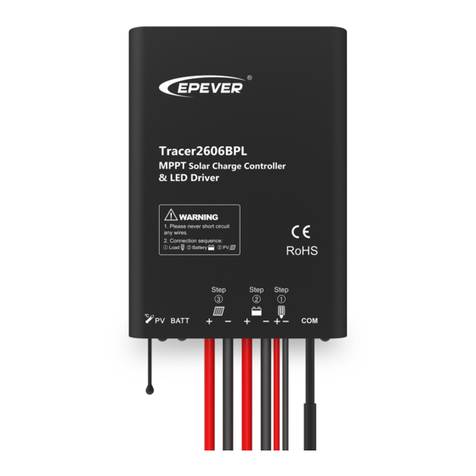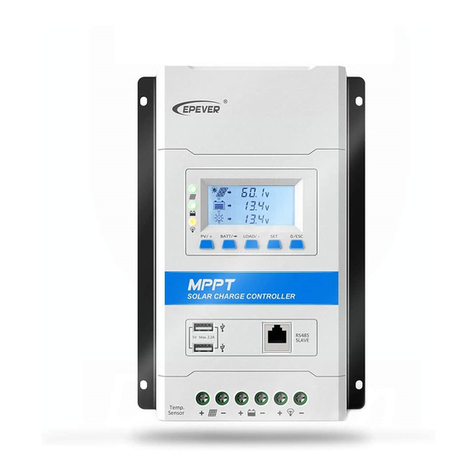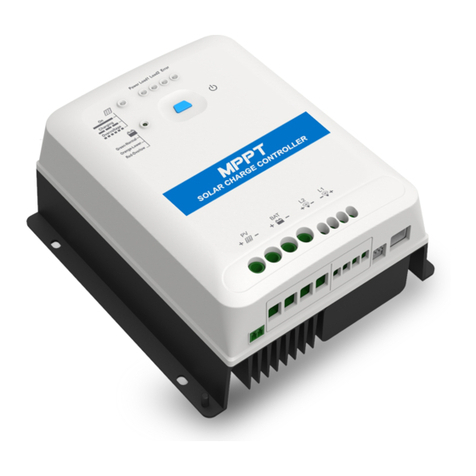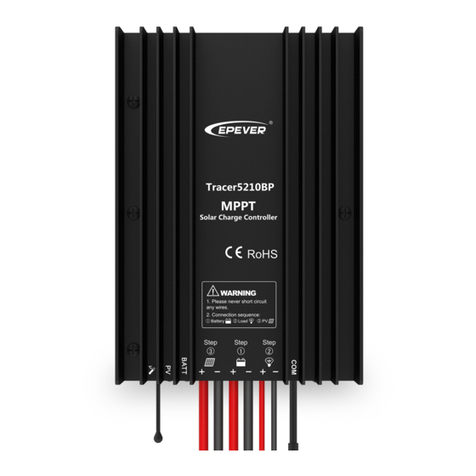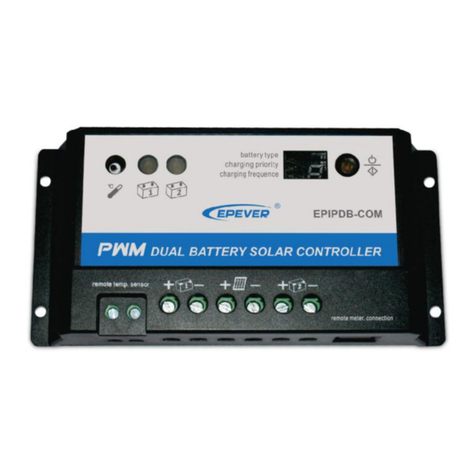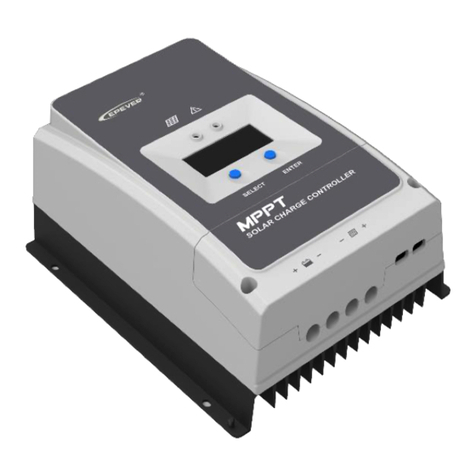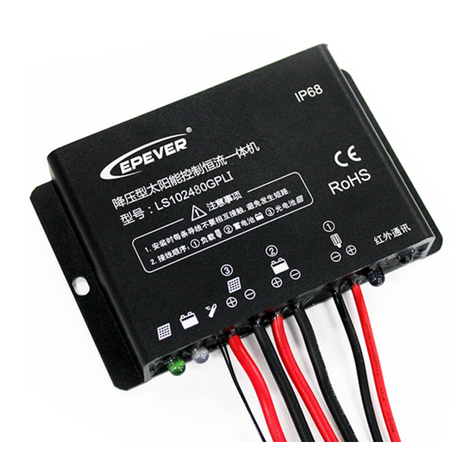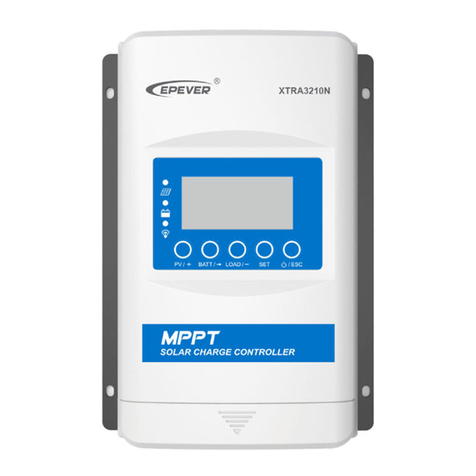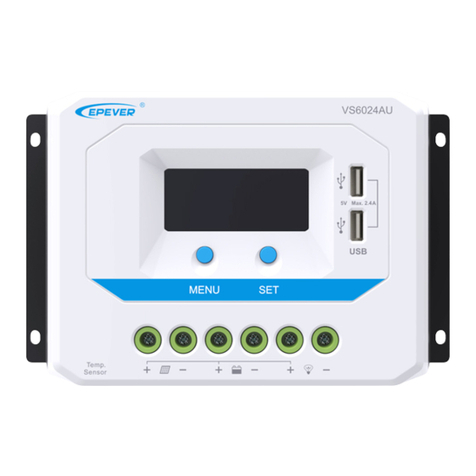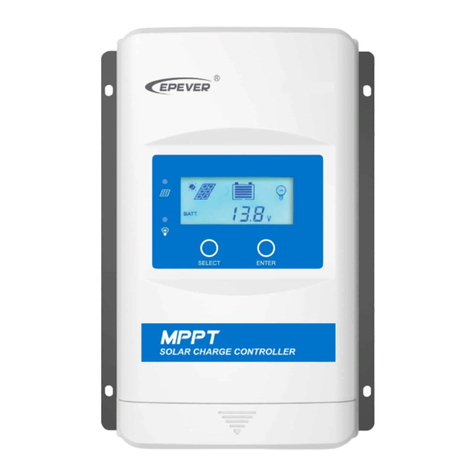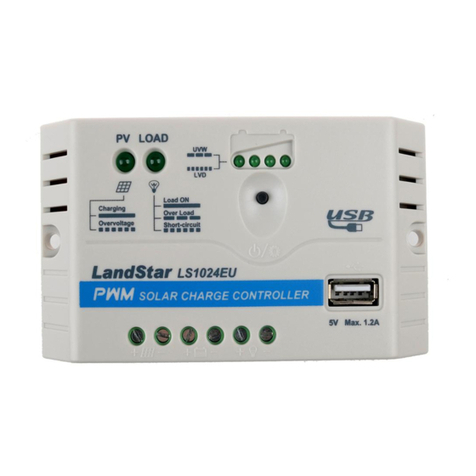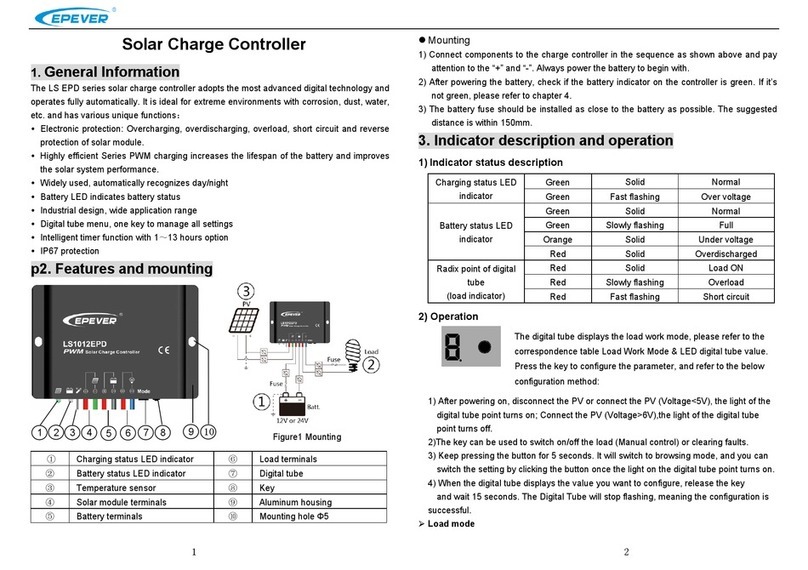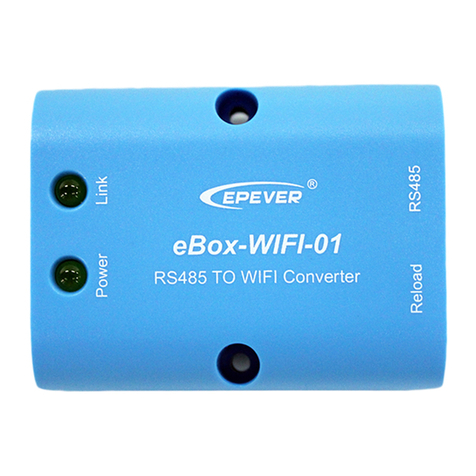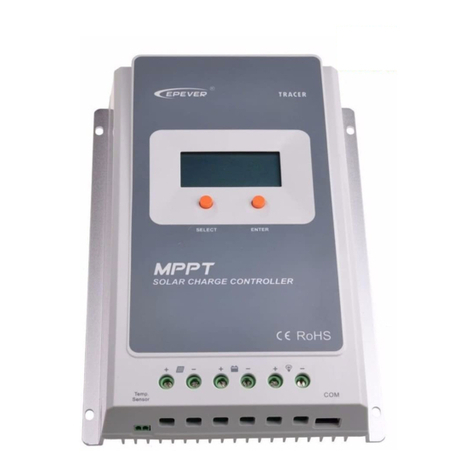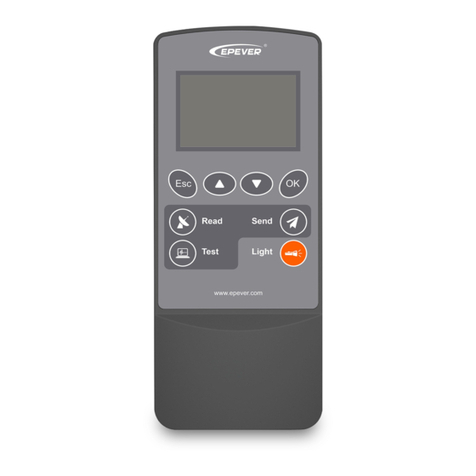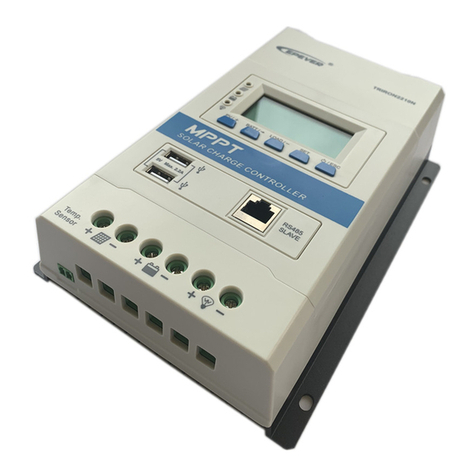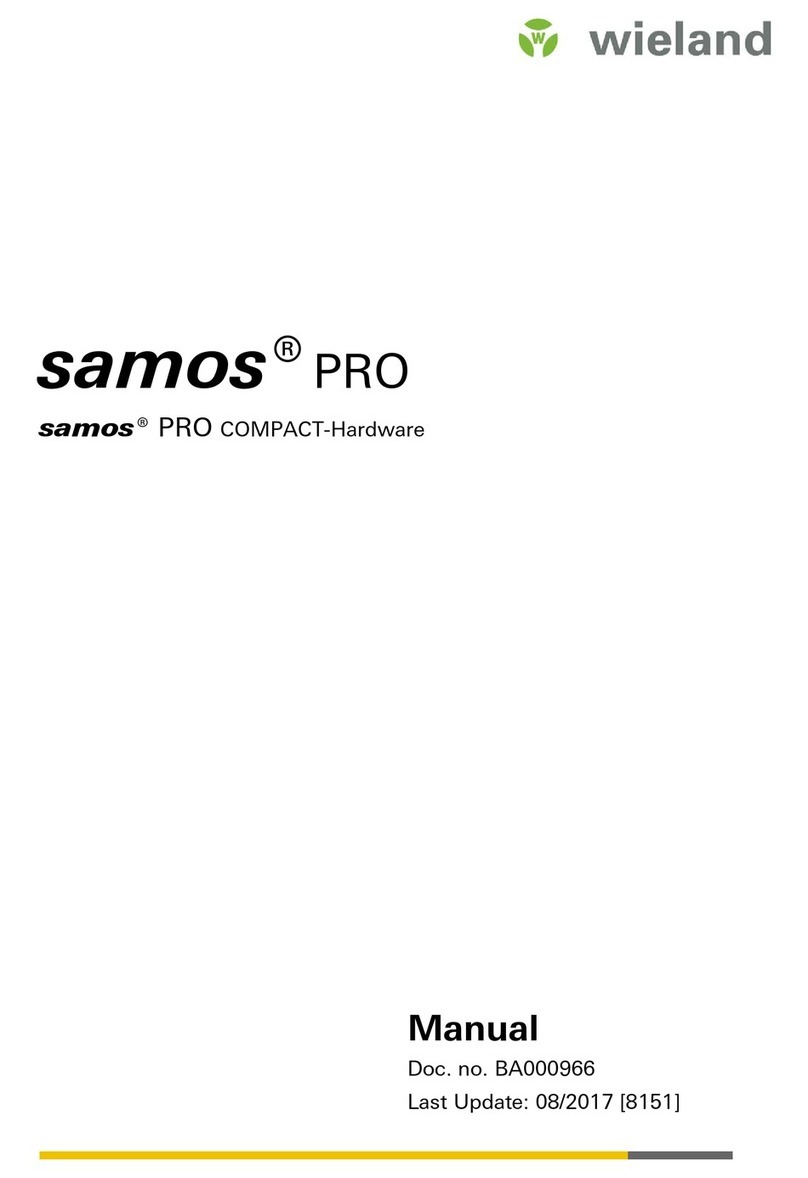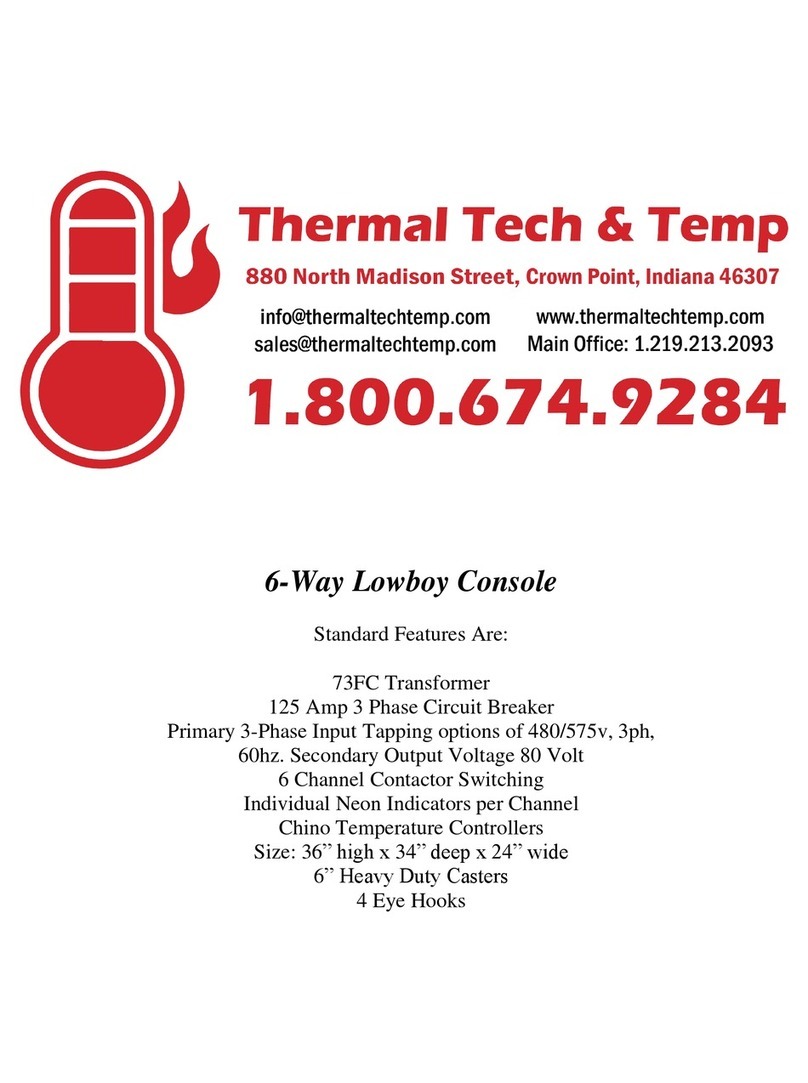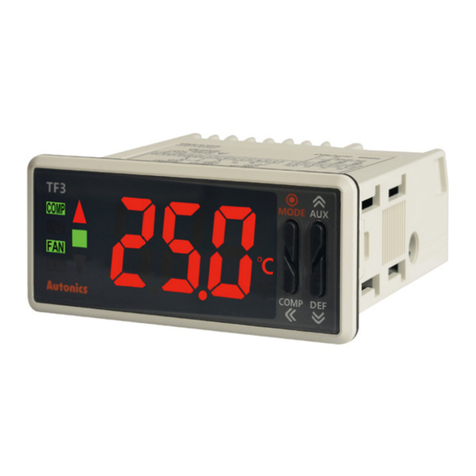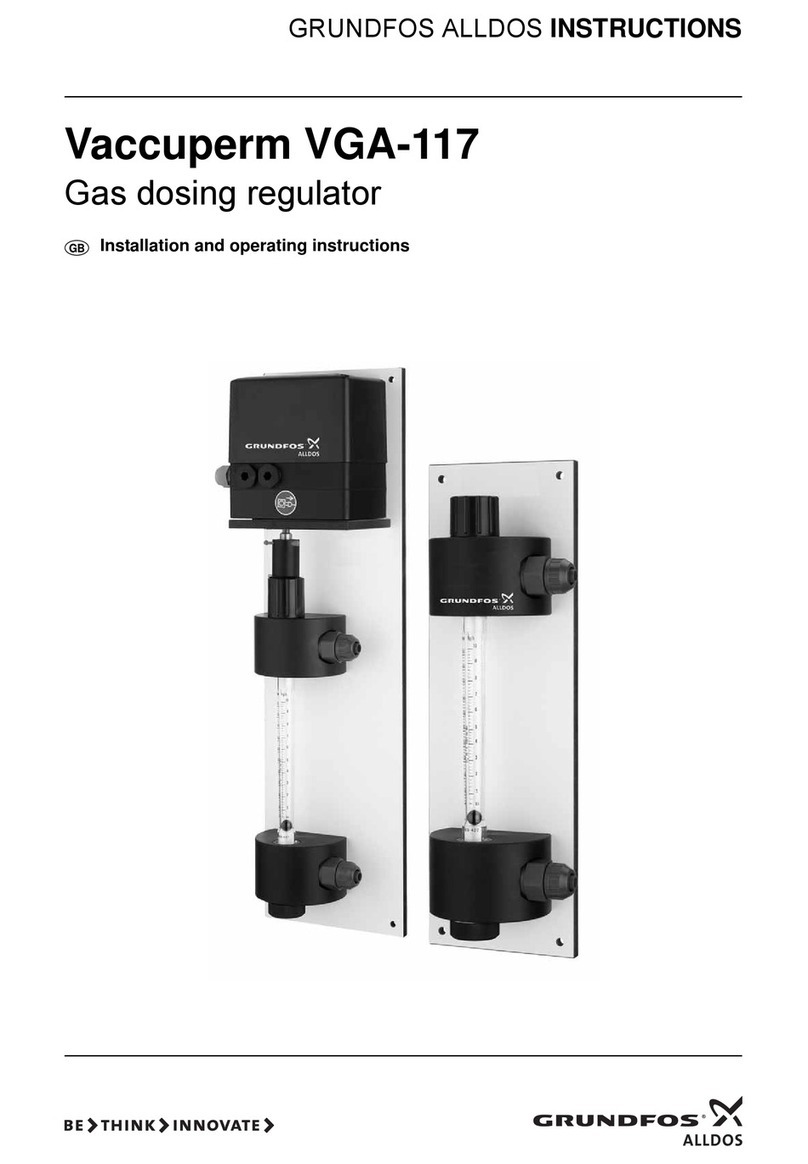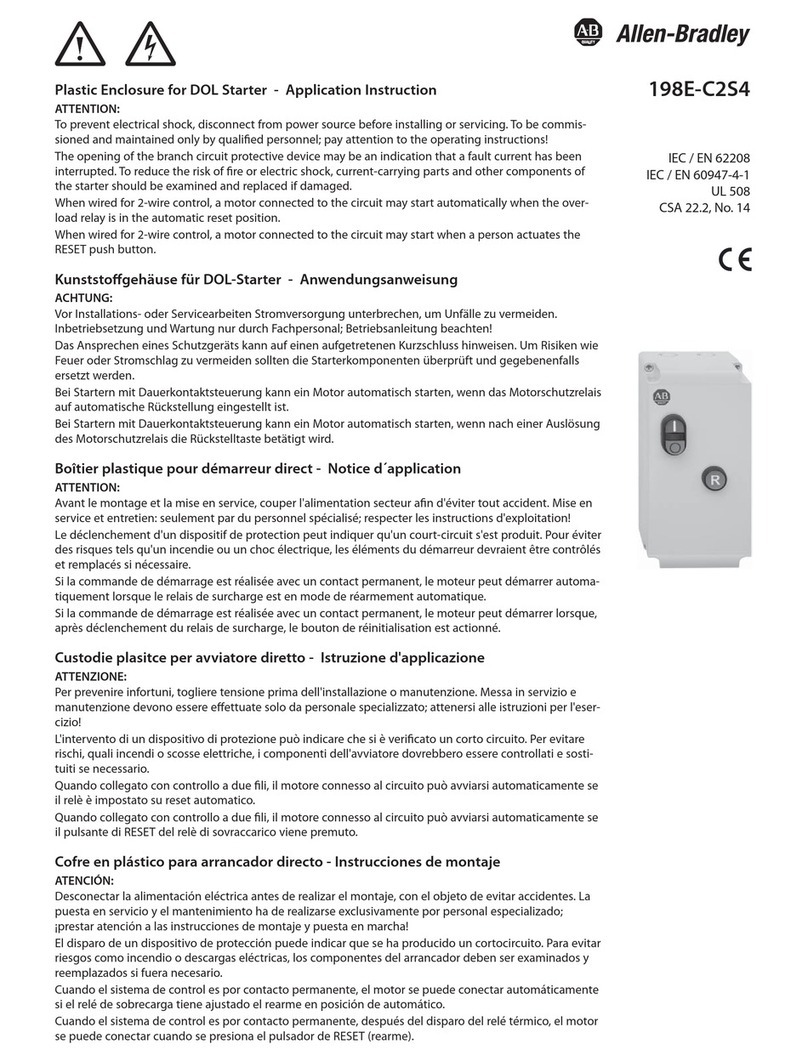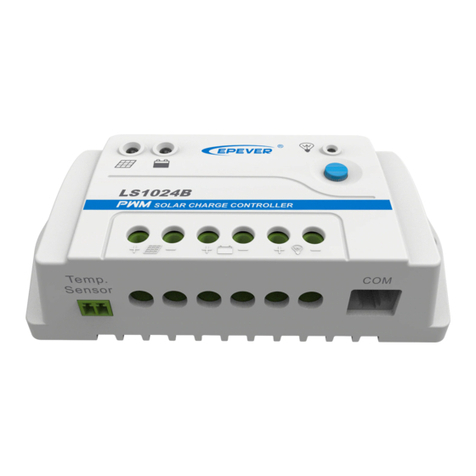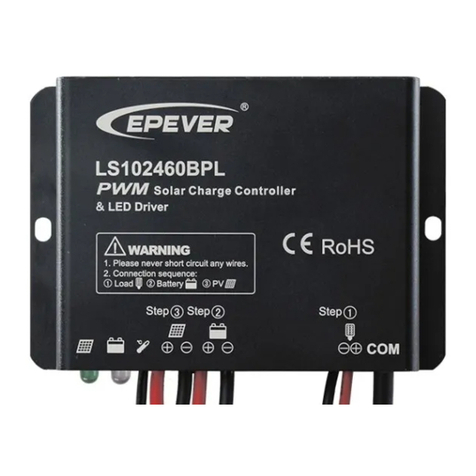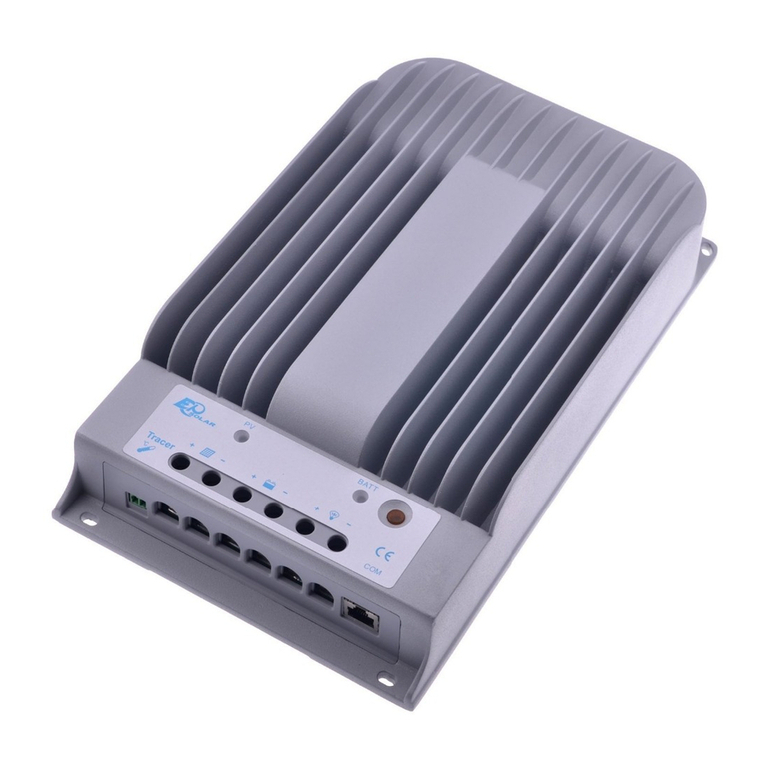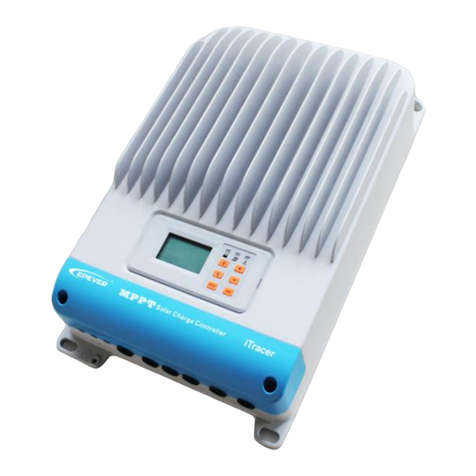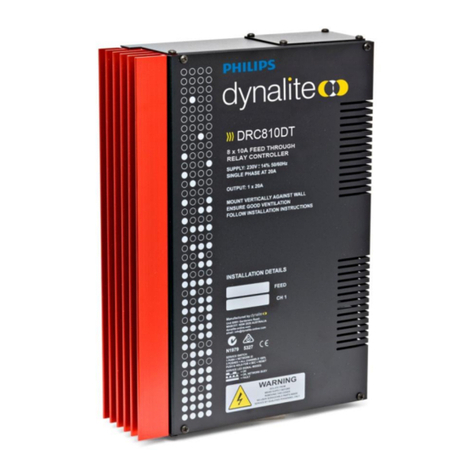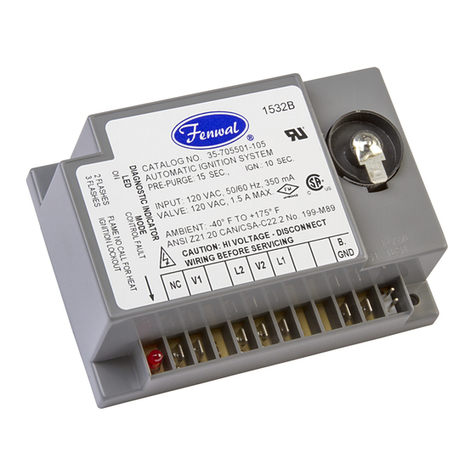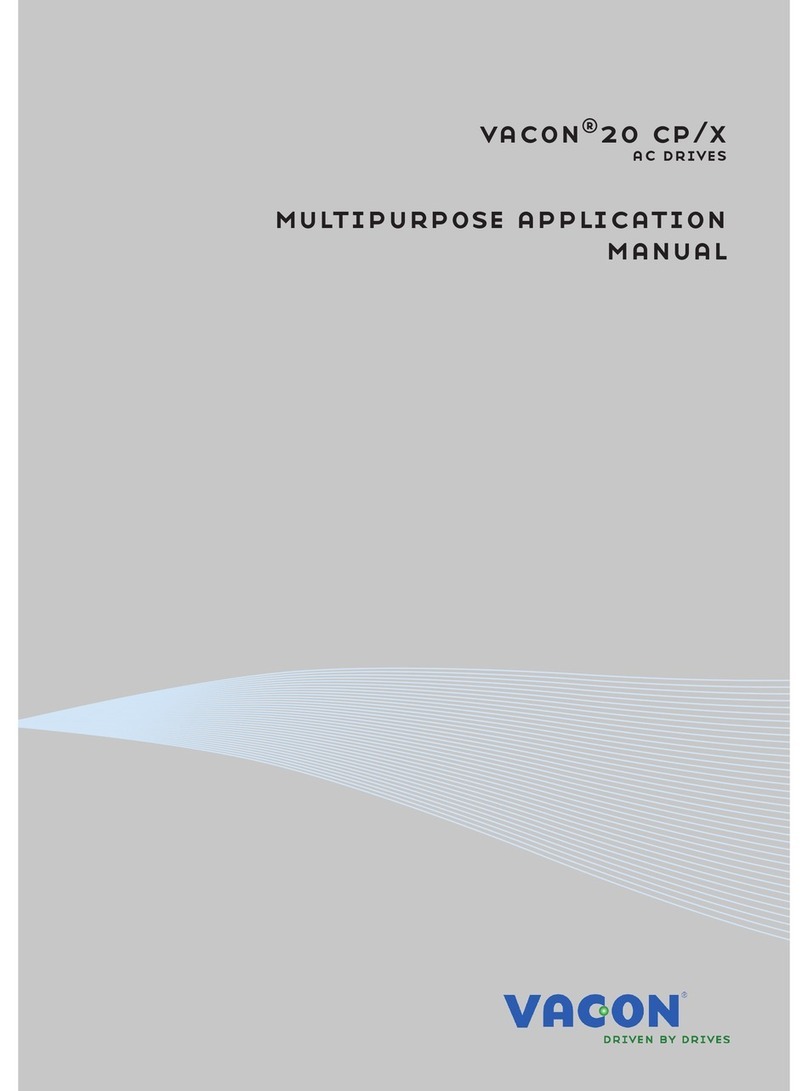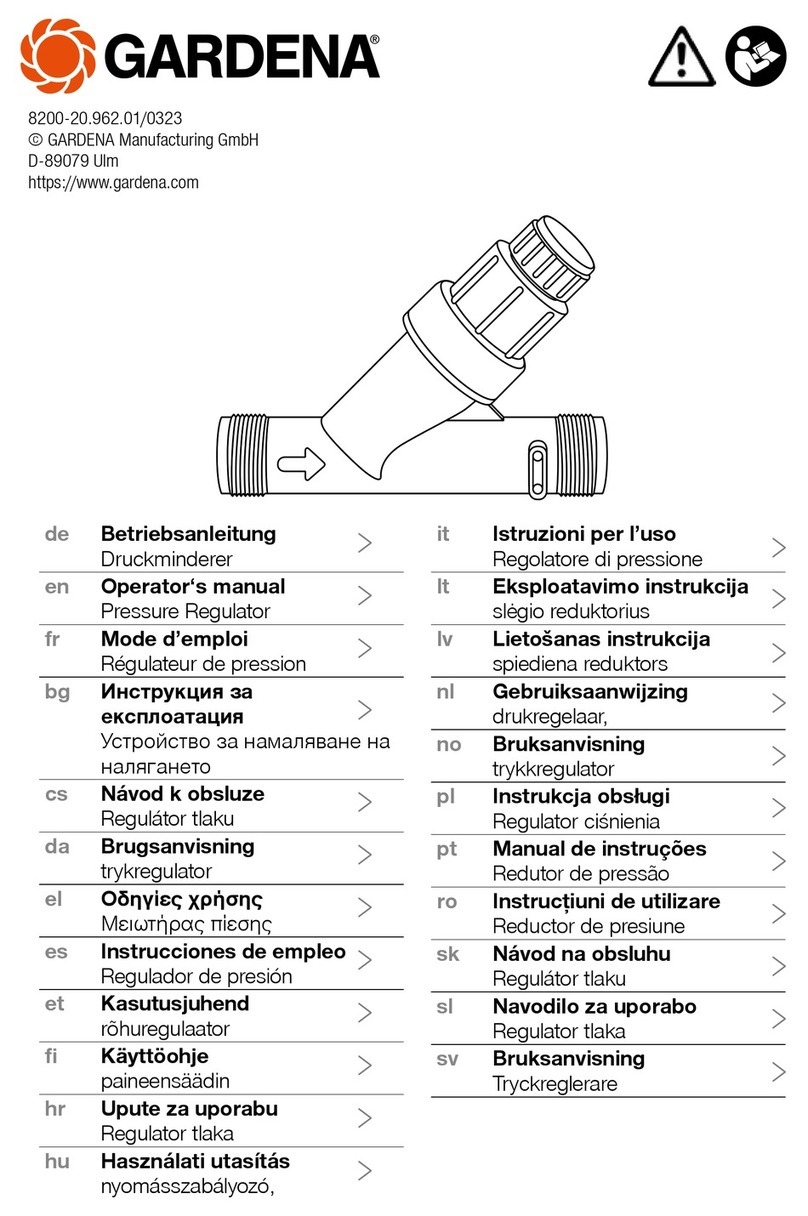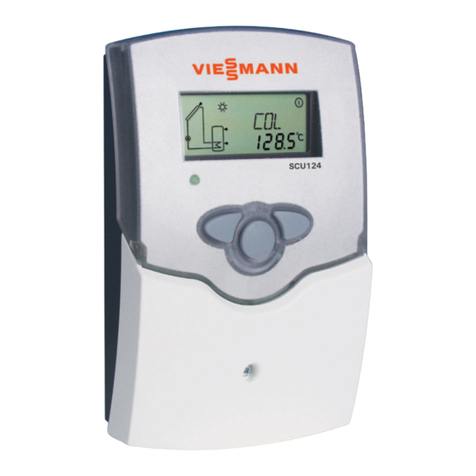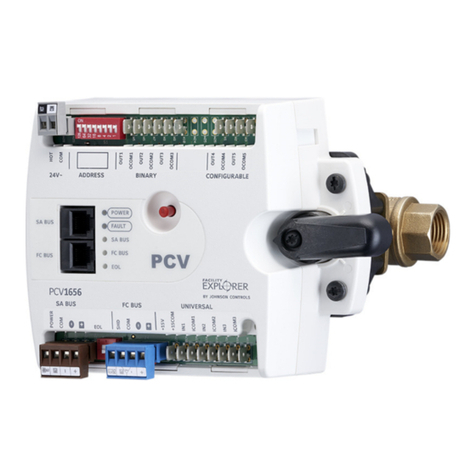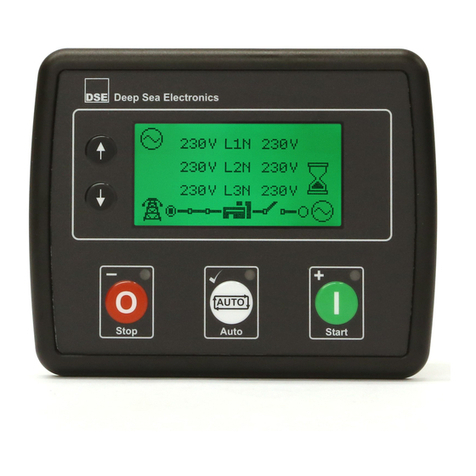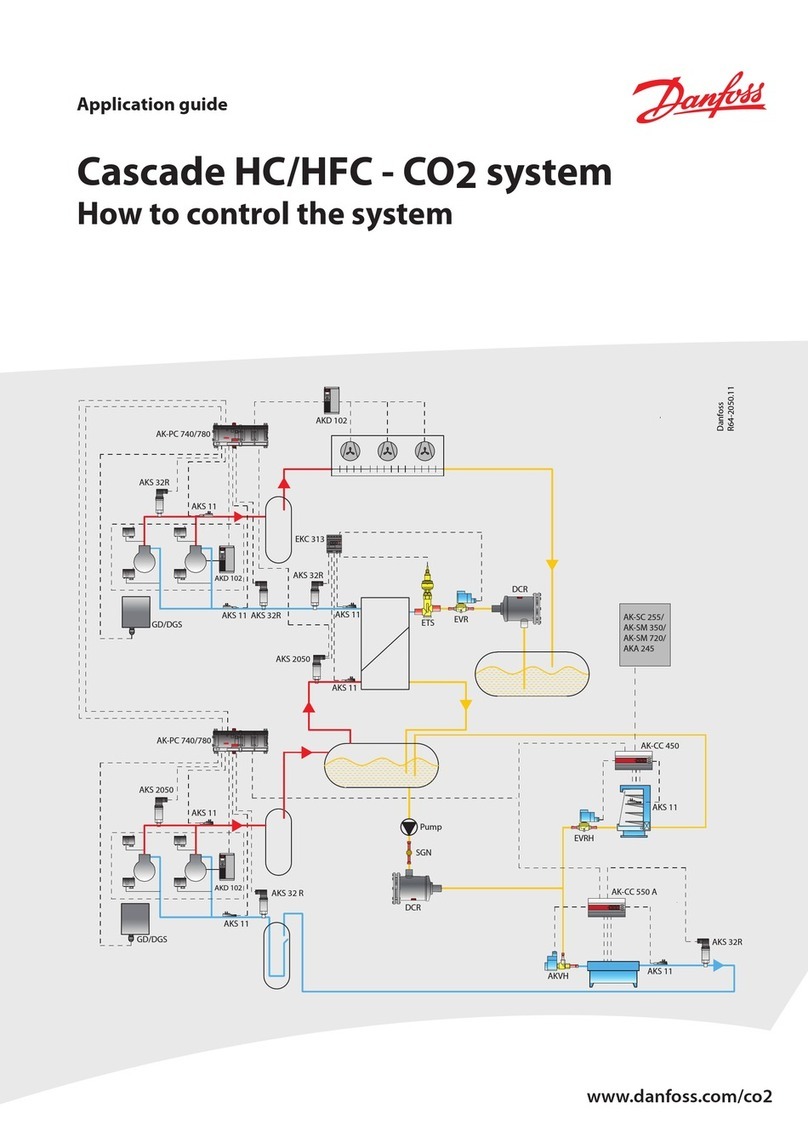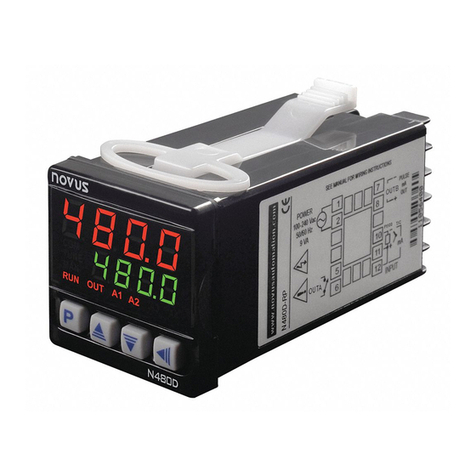
HUIZHOU EPEVER TECHNOLOGY CO., LTD. Tel:+86-10-82894896/82894112/+86-752-3889706 Website:www.epever.com
34
Timer3
LED Rated Current Percentage
Timer4/5
LED Rated Current Percentage
Timer6
LED Rated Current Percentage
※Modify the default value according to the user's requirement.
4) Time Control
Control the load on/off time by setting the real-time clock.
5) Intelligent Power Mode
When the battery voltage goes lower than the "Reduce Power Start Voltage (adjustable),"
the intelligent power reduction mode is enabled. The LED output current is automatically
reduced in linear with the battery's voltage drop. When the battery voltage goes lower than
the "Reduce Power End Voltage (adjustable)," the LED output current is 2% of the rated
load current. The minimum percentage can be set to 1%). Also, when the battery voltage is
higher than "Reduce Power Start Voltage," the controller exits the intelligent power
reduction mode.
In the mode of Light ON/OFF and Light ON/Timer, the load is turned on
after a 1-minute delay,the delay time can be set.
The controller's real-time clock is an analog clock, valid at power-on and
invalid after power-off. When using the time mode, the clock needs to be
calibrated by handheld devices. Do not power off the controller after
calibration.
6. Setting Operation
7. Protection
When the battery is correctly connecting,
the PV can be reversed.
The controller is
no damage
When the PV is not connected, or the
connection is reversed, the battery can be
reversed.
WARNING: Controller is damaged when
the PV connection is correct, and the
battery connection is reversed!
The battery voltage reaches the OVD
The battery voltage reaches the LVD
The temperature sensor is higher than 65℃
The temperature sensor is less than 55℃
Li-battery Low
Temperature★
The temperature sensor is less than the
low-temperature value
Stop charging or
discharge
The temperature sensor is higher than the
low-temperature value
Begin charging
or discharge
Load current ≥2.5 times rated current
In one short circuit, the output is OFF 5s;
Two short circuits, the output is OFF 10s;
Three short circuits, the output is OFF 15s;
Four short circuits, the output is OFF 20s;
Five short circuits, the output is OFF 25s;
Six short circuits, the output is OFF
Output is OFF
Clear the fault:
Restart the
controller or
wait for one
night-day cycle
(night time>3
hours).
Load Open
Circuit(Load over
voltage)
Max. load voltage≥68V
One open circuit, the output is OFF 5s;
Two open circuits, the output is OFF 10s;
Three open circuits, the output is OFF 15s;
Four open circuits, the output is OFF 20s;
Five open circuits, the output is OFF 25s;
Six open circuits, the output is OFF 5s;
Seven open circuits, the output is OFF 5s
Output is OFF
(Cycle to
perform)
★If selecting a lithium battery, set the low-temperature value(LTV) according to the
specification; otherwise, the lithium battery is damaged.
8. Troubleshooting
Charging LED
indicator off during
daytime when
sunshine falls on PV
modules properly
Confirm that PV and battery wire
connections are correct and tight
Min.9V can start up the
controller.
Measure the battery voltage with a
multi-meter. Min.9V can start up the
controller.
Battery LED
indicator green Fast
Flashing
①Disconnect the solar array and
measure the battery voltage; ②
Change the controller; ③Change
the battery
Battery LED
indicator red
When the battery voltage is restored
to or above setpoint (low voltage
reconnect voltage), the load work
Battery Status LED
red indicator
flashing
The controller automatically stops
working. When the temperature is
below 50 ºC, the controller resumes
All the LED indicator
flashing(battery red
Check whether the battery voltage
matches the controller's working
voltage. Please change to a suitable
battery or reset the working voltage
Powering on
normally, the load is
off
①The connecting
wires are error or
virtual connection
②Load mode is wrong
③The controller does
not match with the LED
light.
④Output short circuit
①Check the connecting cables
②Check the load mode and
parameter
③The voltage of the LED light source
is not in the output voltage range of
the controller
④Check the connecting cables and
LED light source
The dimming
function is invalid
The controller does not
match with the LED
light source. This
product is a step-up
current control; if the
input voltage is lower
than the rated voltage,
it is not working.
①Replace the LED light
②Reduce system rated voltage
grade, and replace the product model
For example, switch the 24V system
to the 12V system, and replace the
corresponding controller.
①When the battery is over discharged, the battery indicator will be red. The load will be off
all the time before the voltage is more than the Low Voltage Reconnect Voltage (LVRV). To
judge the system is normal or not, firstly measuring the battery voltage, whether it is more
than LVRV; if not, restarting the controller to detect the load.
The LVRV can be set, but it must be done carefully to avoid damaging the
battery if the LVRV is set too low.
9. Technical Specifications
◆When selecting a lithium battery, the controller cannot automatically recognize
the nominal system voltage and has no temperature compensation.
▼The parameters are the 12V system at 25 ºC, double the values in the 24V system.
10. Disclaimer
This warranty does not apply under the following conditions:
Damage from improper use or use in an unsuitable environment.
PV or load current, voltage, or power is exceeding the rated value of the controller.
The controller's working temperature exceeds the limit working temperature.
User disassembly or attempted to repair the controller without permission.
The controller is damaged due to natural elements such as lighting.
The controller is damaged during transportation and shipment.
Any changes without prior notice! Version number:V2.2
Max. PV open circuit voltage
Battery input voltage range
(Max. Battery Voltage +2V)~60V
Load open circuit voltage
Maximum output efficiency
Output current
control accuracy
Lead-acid battery: Sealed(default)/Gel/Flooded/User
Lithium battery:LiFePO4/Li-NiCoMn/User
Sealed:14.6V; Flooded:14.8V;User:9-17V
Sealed:14.4V;Gel:14.2V;Flooded:14.6V;User:9-17V
Sealed/Gel/Flooded:13.8V; User:9-17V
Reduce Power Start
Voltage ▼
Sealed/Gel/Flooded:12.2V; User:9-17V
Reduce Power End
Voltage ▼
Sealed/Gel/Flooded:12.0V; User:9-17V
Low Voltage
Reconnect Voltage▼
Sealed/Gel/Flooded:12.6V; User:9-17V
Low Voltage Disconnect
Voltage▼
Sealed/Gel/Flooded:11.1V; User:9-17V
LiFePO4(4s):14.5V/Li-NiCoMn(3s):12.5V/User:9-17V
Reduce Power Start
Voltage ▼
LiFePO4(4s):12.8V/Li-NiCoMn(3s):12.2V/User:9-17V
Reduce Power End
Voltage ▼
LiFePO4(4s):12.0V/Li-NiCoMn(3s):10.5V/User:9-17V
Low Voltage
Reconnect Voltage▼
LiFePO4(4s):12.8V/Li-NiCoMn(3s):10.5V/User:9-17V
Low Voltage Disconnect
Voltage▼
LiFePO4(4s):11.1V/Li-NiCoMn(3s):9.3V/User:9-17V
Charge Circuit Voltage Drop
Working environment
temperature
PV/BAT:14AWG/2.5mm2
LOAD: 18AWG/1.0mm2
PV/BAT:
12AWG/4.0mm2
LOAD:
18AWG/1.0mm2
There are two methods to check and set the controller’s
parameters:
1) IR Remote Controller—RC-10
2) Super Parameter Programmer—FC-01
This method can realize one-key setting operation which is
suitable for bulk quantity products setting or applied in the
projects.
NOTE: Please refer to the user manual of handheld device.


